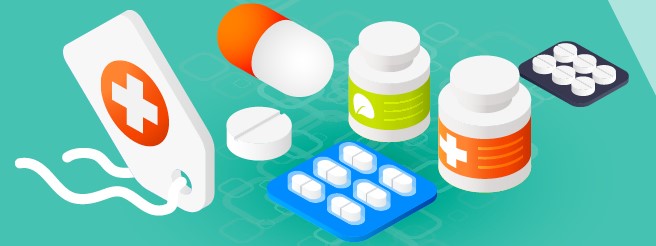Some prescription medicines used for short-term pain relief, anxiety or sleep disorders can be addictive. The dispensing of these high risk prescription medicines is now being monitored through the SafeScript program.
However, it is also important individuals are aware of the risks and talk with health practitioners about how best to minimise those risks.

Types of high risk prescription medicines
Benzodiazepines
Benzodiazepines are a group of medicines that work in the central nervous system to produce effects including anti-anxiety, sedation, sleep and anti-seizure. They may also be used when you receive an anaesthetic in hospital. They are usually only effective for the first few weeks of treatment.
Common brand names
Temazepam
|
Diazepam
|
Oxazepam
|
Clonazepam
|
Nitrazepam
|
Alprazalam
|
Bromazepam
|
Midazolam
|
Flunitrazepam
|
Lorazepam
|
Codeine containing analgesics
Codeine is part of the family known as opioid analgesics. It is commonly found in pain relieving medicines with paracetamol, ibuprofen or aspirin. Codeine is converted to morphine in the body.
Common brand names
Paracetamol
|
Ibuprofen
|
Aspirin
|
Opioids
Opioids are a group of strong medicines that are used for managing pain. Opioids can be useful in managing strong or cancer-related pain.
Common brand names
Oxycodone
|
Fentanyl
|
Morphine
|
Hydromorphone
|
Buprenorphine
|
Tapentadol
|
Methadone
|
Tramadol
|
Codeine |
Quetiapine
Quetiapine belongs to a class of medications known as antipsychotics. It is used to treat conditions such as bipolar disorder, mania, schizophrenia, hard to treat depression and generalised anxiety disorder.
Common brand names
| Seroquel Delucon |
Kaptan Quetia |
Syquet |
Z Drugs -Zopiclone and Zolpidem
Zopiclone and zolpidem are medications that are sometimes collectively called the “Z drugs”. They are used for the short-term treatment of sleep problems.
Common brand names
Zolpidem
|
Zopiclone
|
Downloadable Flyers
The information presented on this page is also available in following flyers:
- Benzodiazepines (PDF 261 KB)
- Codeine containing analgesics (PDF 265 KB)
- Opioids (PDF 259KB)
- Quetiapine (PDF 240 KB)
- Z Drugs -Zopiclone and Zolpidem (PDF 259KB)
Taking these medicines safely
If you have been prescribed one of these medicines:
- Only take the dose prescribed for you
- Don’t share your medicine with anyone
- Check with your GP or pharmacist before using other medicines
- Let your pharmacist or GP know if you experience side effects such as memory loss, confusion, breathing problems, day time sedation, anxiety, mood changes, balance problems and falls, impaired driving and sleep walking
- Talk to your GP, pharmacist or other health professional if you find the medicine no longer helps to control your symptoms.
How would I know if I am having problems with a high risk prescription medicine?
Possible signs of dependence:
- Taking the medicine in larger amounts or for longer than you’re meant to
- Not being able to cut down or stop using the medicine
- Having cravings and urges to use the medicine
- Not managing to do what you should at work, home, or school because of your use of the medicine
- Its use causes problems in relationships
- Repeatedly using the medicine, even when it puts you in danger
- Needing more of the medicine to get the effect you want (eg. developing a tolerance)
- Having withdrawal symptoms that can be relieved by taking more of the medicine
Know the right questions to ask
Questions I can ask my GP or pharmacist
- How long do I have to take it?
- How safe is this medicine?
- What are my chances of becoming addicted?
- Do I have to take this medicine?
- What else can I do?
Where can I find more information or help?
Talk to your GP, pharmacist or other health care professional if you are concerned about the medicines you take.
Other services that can assist:
- Pharmaceutical Helpline – 1800 737 233
- Directline – 1800 888 236
- SafeScript